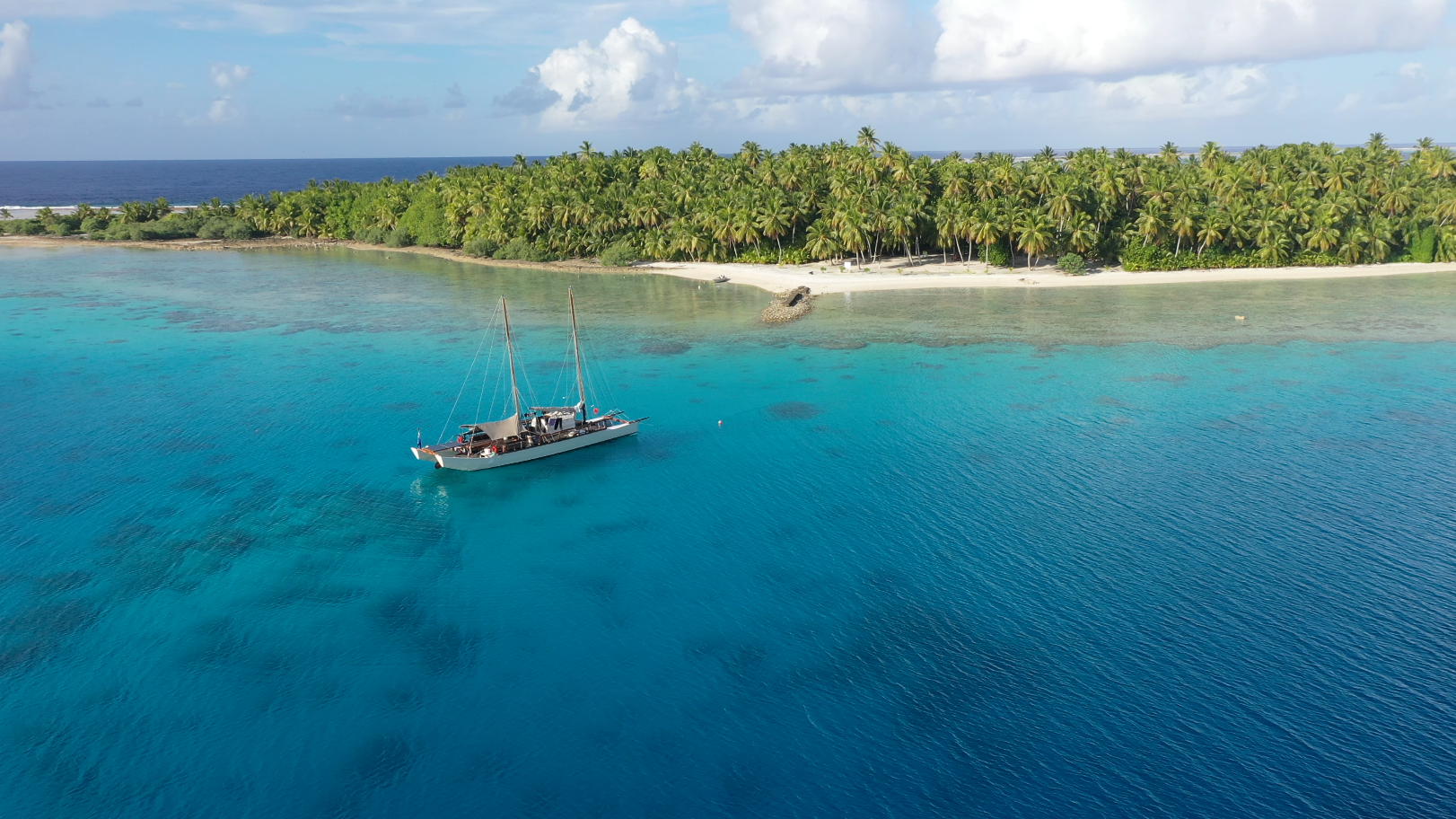RAT Eradication Programme on Suwarrow completed
Saturday 2 July 2022 | Written by Te Ipukarea Society | Published in

Vaka Marumaru Atua anchored close to Suwarrow during its visit last year. Picture: SEI PHOTOGRAPHY/22061312
Te Ipukarea Society staff members, Alanna Smith and Kelvin Passfield sailed up to the northern group island of Suwarrow at the beginning of June for a RAT Eradication programme on the tradition Vaka Marumaru Atua. In this daily blog, Alanna explains the rat eradication programme since they have been in Suwarrow.
And just like that our time on Suwarrow for the rat eradication project has come to an end.
The seven-person rat baiting team spent the last two nights camped on Motu Tou, where eight days before they had camped and laid poison on the two adjacent small Kena motu. On the way to the campsite, the team stopped off on Motu Manu (bird island) to continue the series of 2022 Suwarrow bird surveys. So many kota’a (frigates) and tara (sooty terns) on that island, as well as a good number of toroa (red-footed boobys).
When the team arrived at Motu Tou in mid-afternoon, they set up camp, and Alanna cooked a late lunch. A few of the strong young ones among us carried the rat bait buckets across the channel and placed them strategically along the shoreline above the high tide mark, ready to be spread the next day. The boys went out fishing for a few fish for our dinner, and the rest of us started searching for any of the coconut crabs we had tagged the week before (numbered on their shells with a twink white marker). Based on how many tagged crabs we found, compared to how many untagged, we would be able to calculate a rough total population count for coconut crabs on Motu Tou. That data has yet to be analysed.
The next day we walked across the channel to Motu Kena Iti and Motu Kena Nui, to spread the rat bait. We were working on a high application rate of bait as we needed to be sure the crabs did not eat it all before the rats had a chance to eat any. The crabs are not affected by the poison at all, but if anyone ate the crabs after they had eaten the poison, they would become quite sick. Although we had not detected any rats on Kena Iti, we decided we should bait it as a precaution, as if there were any rats there, they may also make it back over to Motu Tou.
It rained a bit overnight, which was not good for the rat baits, making them soft and spongy, possibly mouldy, and less attractive to the rats. As we had some additional poison remaining, we returned to Kena Nui again on Wednesday morning and laid a third round of baits. As we were completing that, we heard Harry’s boat arriving at 8.30am to take us back to the Vaka.
He told us the Vaka was ready and waiting to sail as soon as we returned, as the wind was soon to change to be less favourable. So we quickly packed up camp and headed back to the Vaka, feeling confident that we had done all we could this time to ensure the last rat on Suwarrow would not survive.
Farewell to Suwarrow for now, though at some stage in the next two years there will need to be a monitoring trip to ensure the rats are indeed all gone.














































